Reflective Looking–Black Printmakers Finding Self and Community Through Print
Curated by Althea Murphy-Price
About the Artist
jina valentine is a mother, visual artist, and educator. Her practice is informed by traditional craft techniques and interweaves histories latent within found texts, objects, narratives, and spaces. jina’s work involves language translation, mining content from material and digital archives, and experimental strategies for humanizing data-visualization. She is also co-founder of Black Lunch Table, an oral-history archiving project. Her work has received recognition and support from the Graham Foundation, Joan Mitchell Foundation, and Art Matters among others. jina received her BFA from Carnegie Mellon and her MFA from Stanford University, and an Associate Professor at the School of the Art Institute of Chicago.
Artist Statement
Much of my current practice relates to reconciling the disconnect between data illustrations and the realities they reference. I intend for this work to foster more nuanced and complicated understandings of sociopolitical phenomena, and to inspire compassionate associations with communities and individuals affected by or generative of these phenomena. My projects employ the use of data aggregation and visualization softwares; research in physical and digital archives; material experimentation; and collaboration with programmers, humanities researchers, and archivists.
In the current work, I consider the disconnect between data visualization and lived experience; whether the illustrations confound or explain phenomena. By sourcing from public databases and humanizing demographic data, I hope to make information more comprehensible, encourage engagement with online archives, and support those initiatives and platforms fostering free and open access to information.

Artist:
Exhibition
Reflective Looking–Black Printmakers Finding Self and Community Through Print
On the Aporia: Almanac project:
To construct this piece, I examined data showing which US cities had the highest rates of deadly encounters with the police, among Black men, in 2015. For the most part, these are also the cities with the highest homicide rates overall. Each city was assigned a month in the almanac according to which month had the most homicides. I then looked at weather data to determine which was the hottest day of that month and located weather reports (as printed in the local newspaper) accounting the forecast for that day. The weather report is cropped. In most cases it’s possible to see the name of the city. The report is enlarged to the standard size of a newspaper broadsheet and copied onto handmade flax paper using homemade iron gall ink (which will oxidize, corrode, and eat the paper eventually). Conceptually, this piece compares the frequency of horrific news accounts with the frequency and modulation of weather reporting. It’s every day the same thing, but different. In terms of aporia relating to debated issues, the Almanac questions the merit of the various debates associated with gun violence—whether citizens should own semi-automatics; the over-use of force by police; that gun-related homicides are a result of outdated legislation… This ‘debate’ seems frivolous, particularly in light of recent events highlighting the need for change. Pairing this with weather analysis—showing the record highs for each month by city—points to the ‘debate’ over climate change. The climate is changing. Why is there debate? Finally, an historic almanac is kept to provide reference to various industries on the future climate in a particular region. It’s useful to consider how an almanac of the dead might function.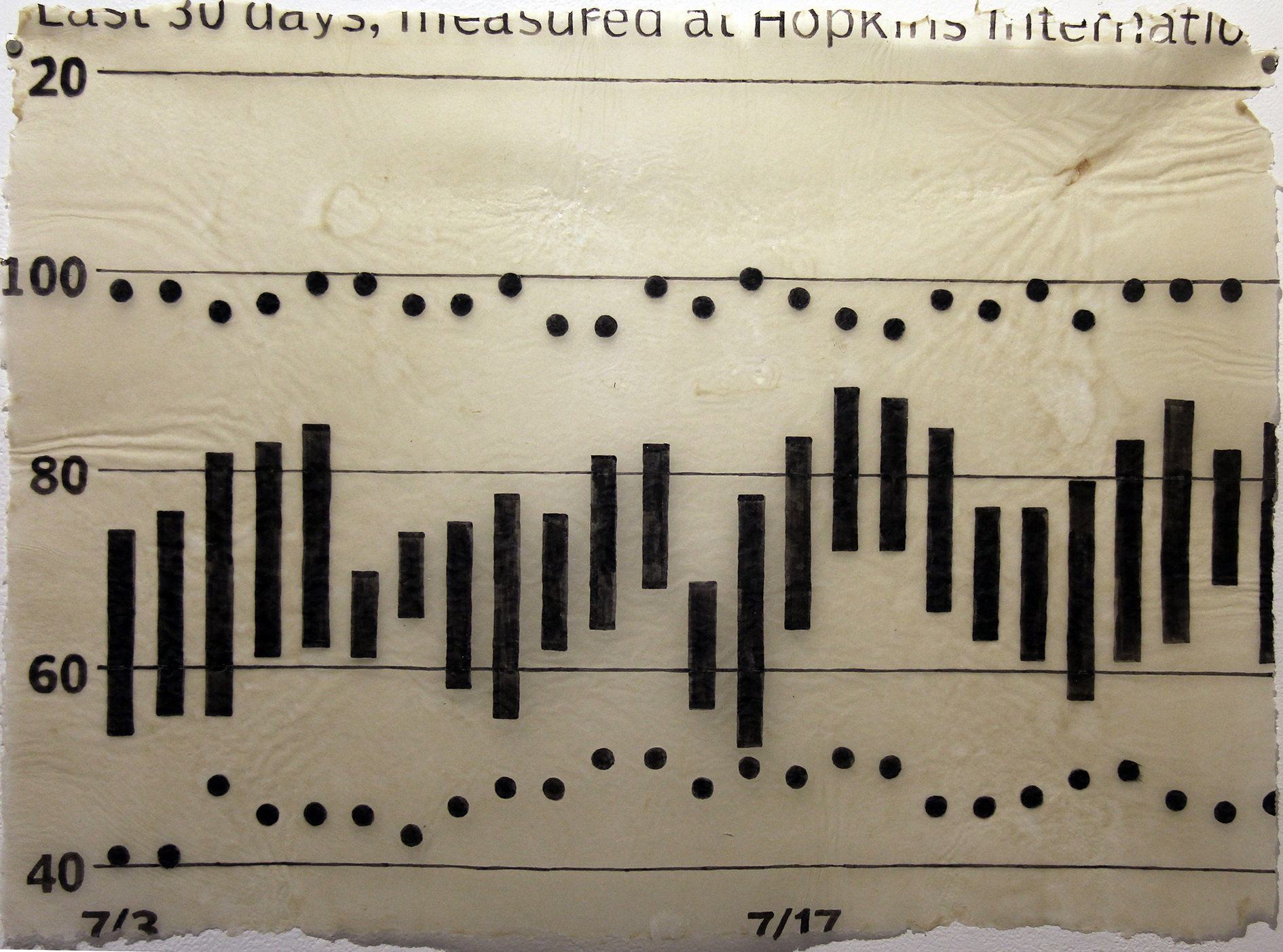
Aporia: Almanac, Baltimore
Iron gall ink on handmade flax paper, 22″ x 30″ irregular, 2016
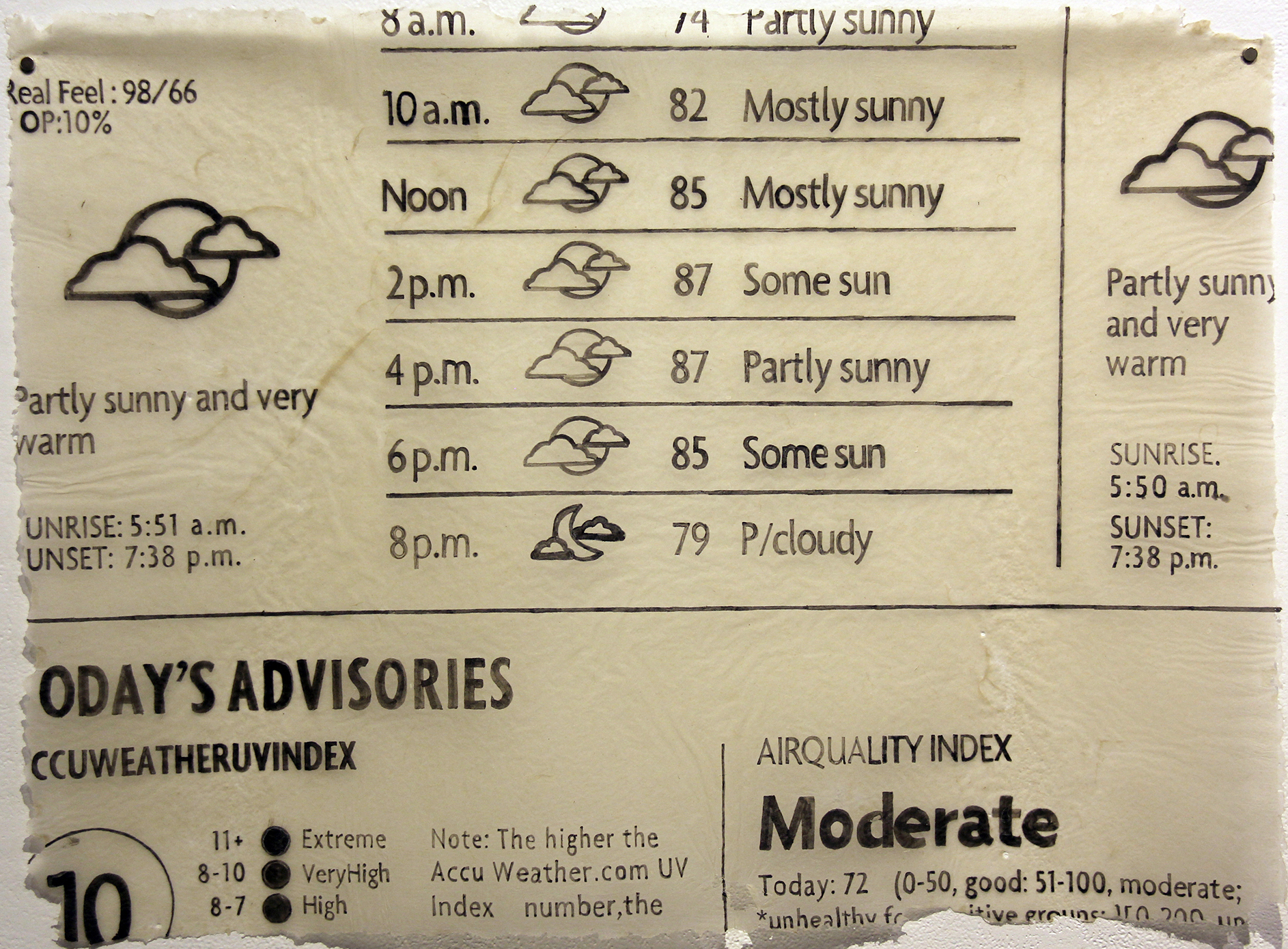
Aporia: Almanac, Birmingham
Iron gall ink on handmade flax paper, 22″ x 30″ irregular, 2016
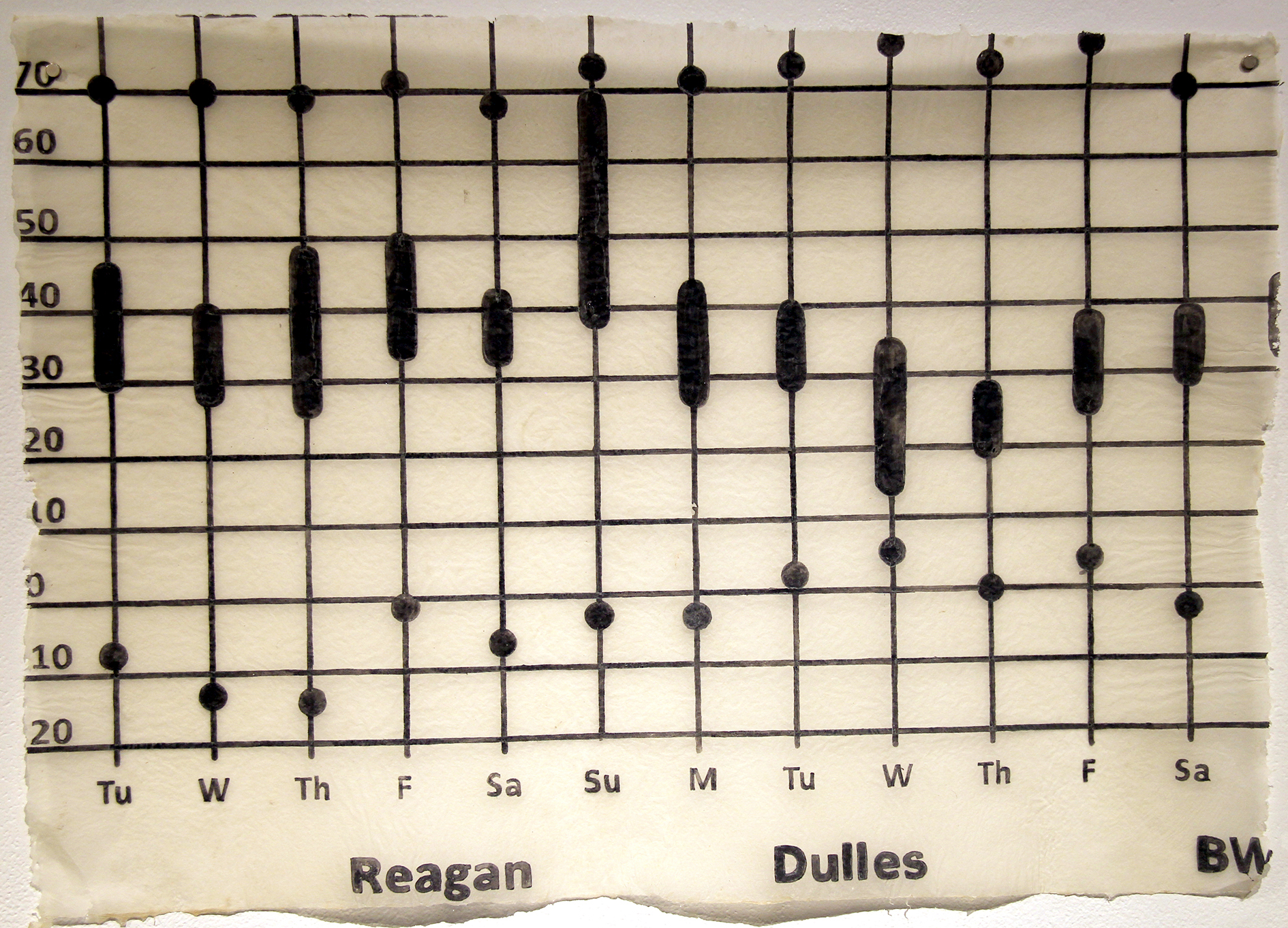
Aporia: Almanac, Cleveland
Iron gall ink on handmade flax paper, 22″ x 30″ irregular, 2016
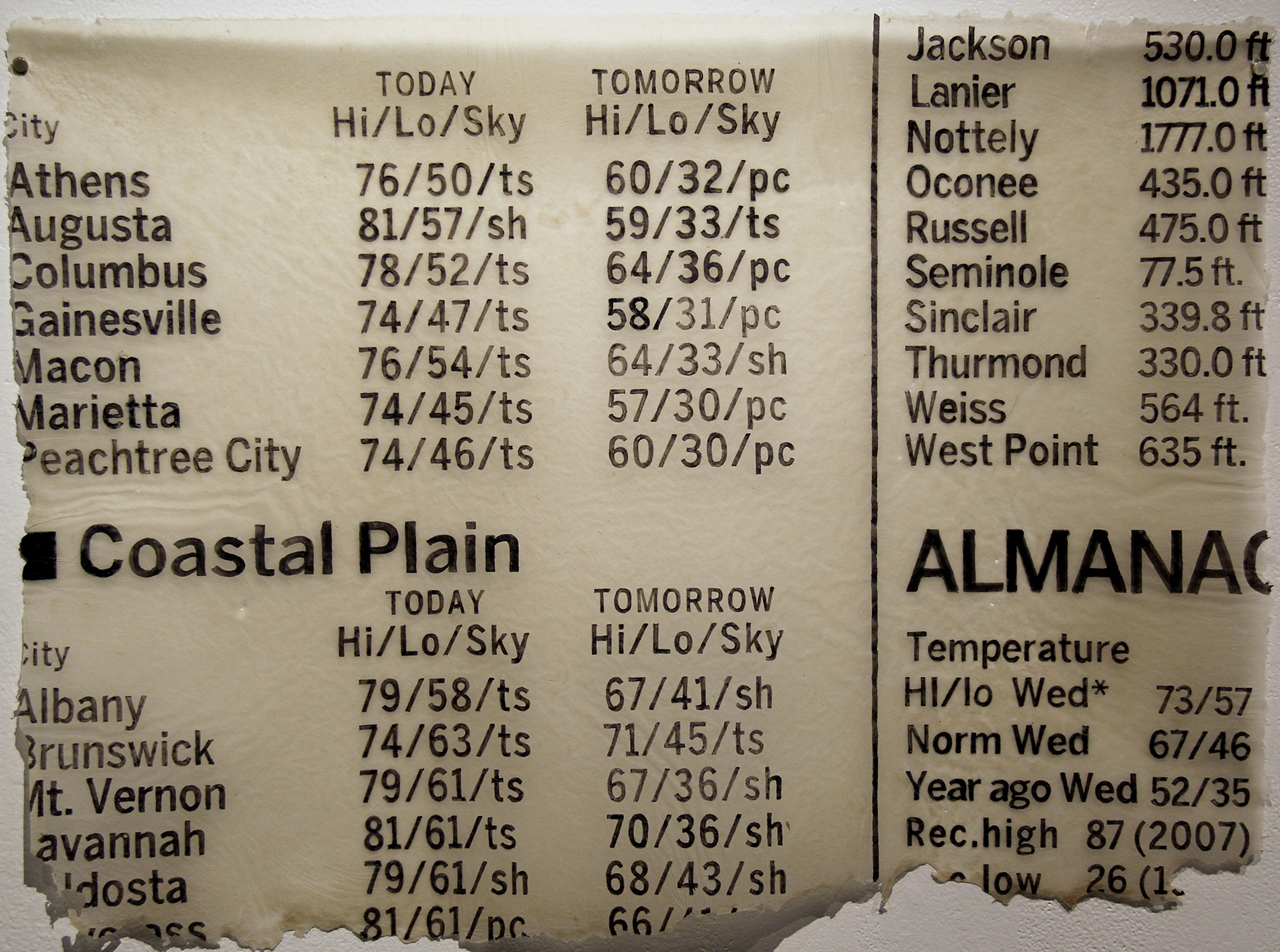
Aporia: Almanac, College Park
Iron gall ink on handmade flax paper, 22″ x 30″ irregular, 2016
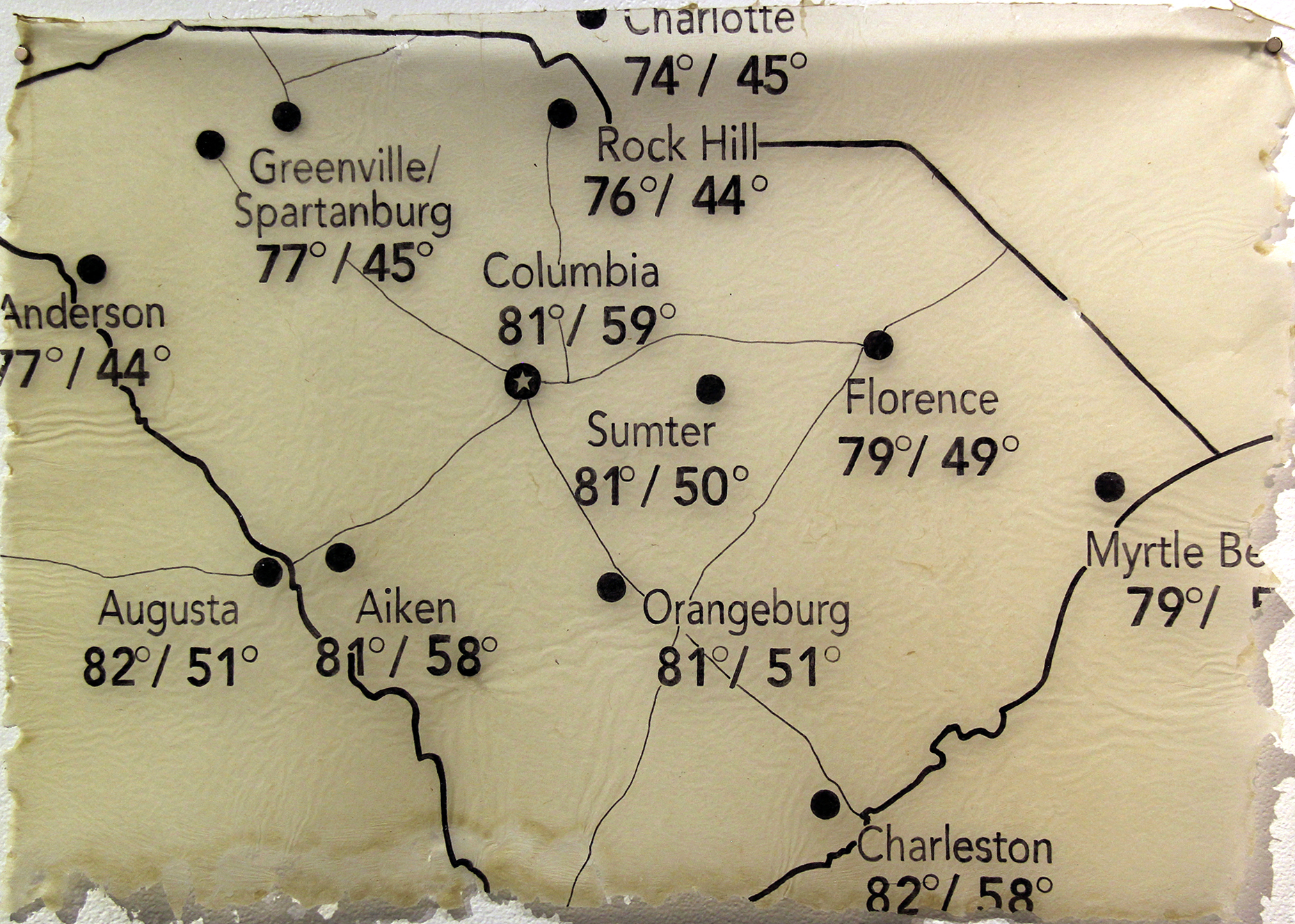
Aporia: Almanac, Columbia
Iron gall ink on handmade flax paper, 22″ x 30″ irregular, 2016
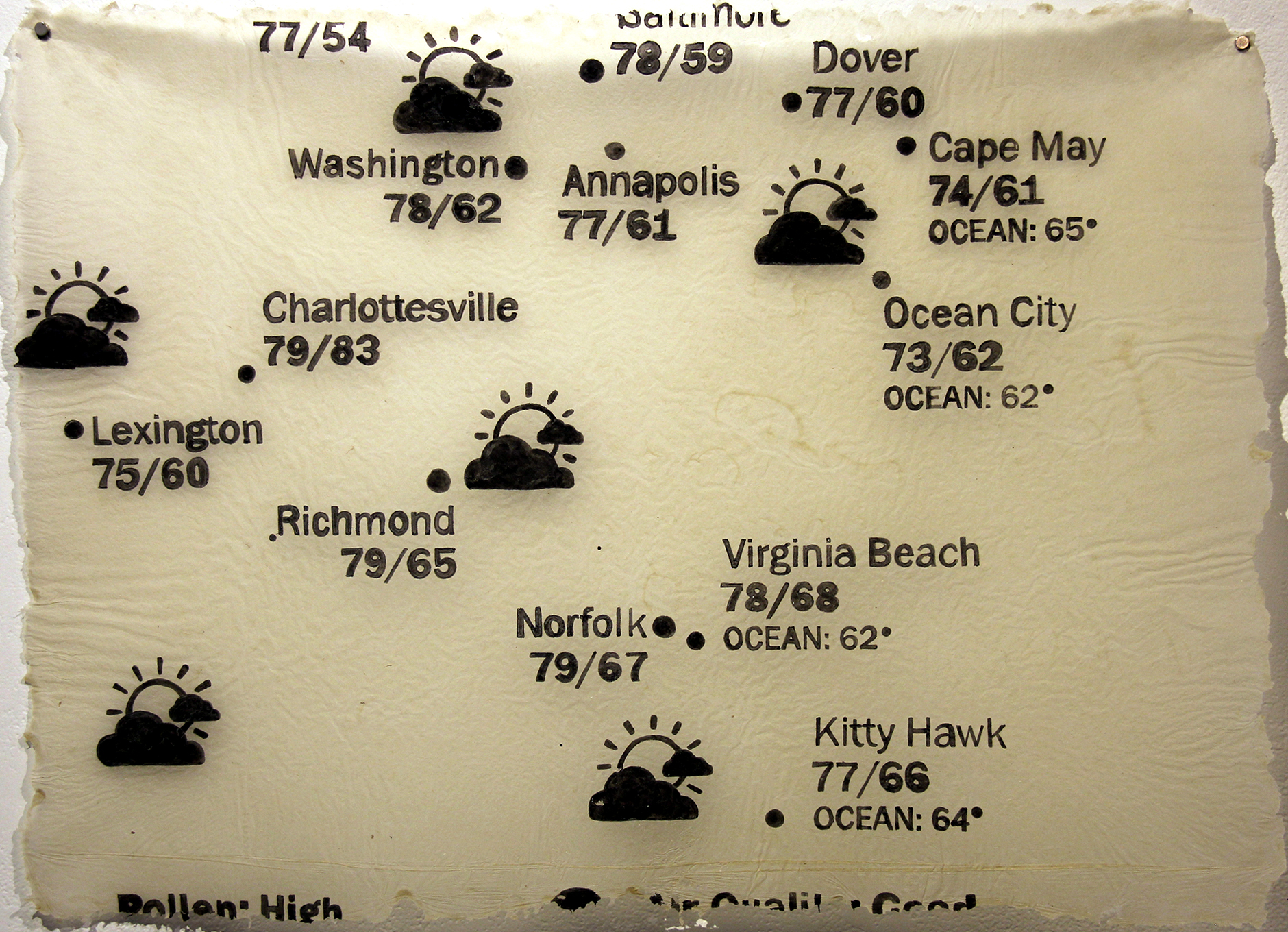
Aporia: Almanac, District of Columbia
Iron gall ink on handmade flax paper, 22″ x 30″ irregular, 2016
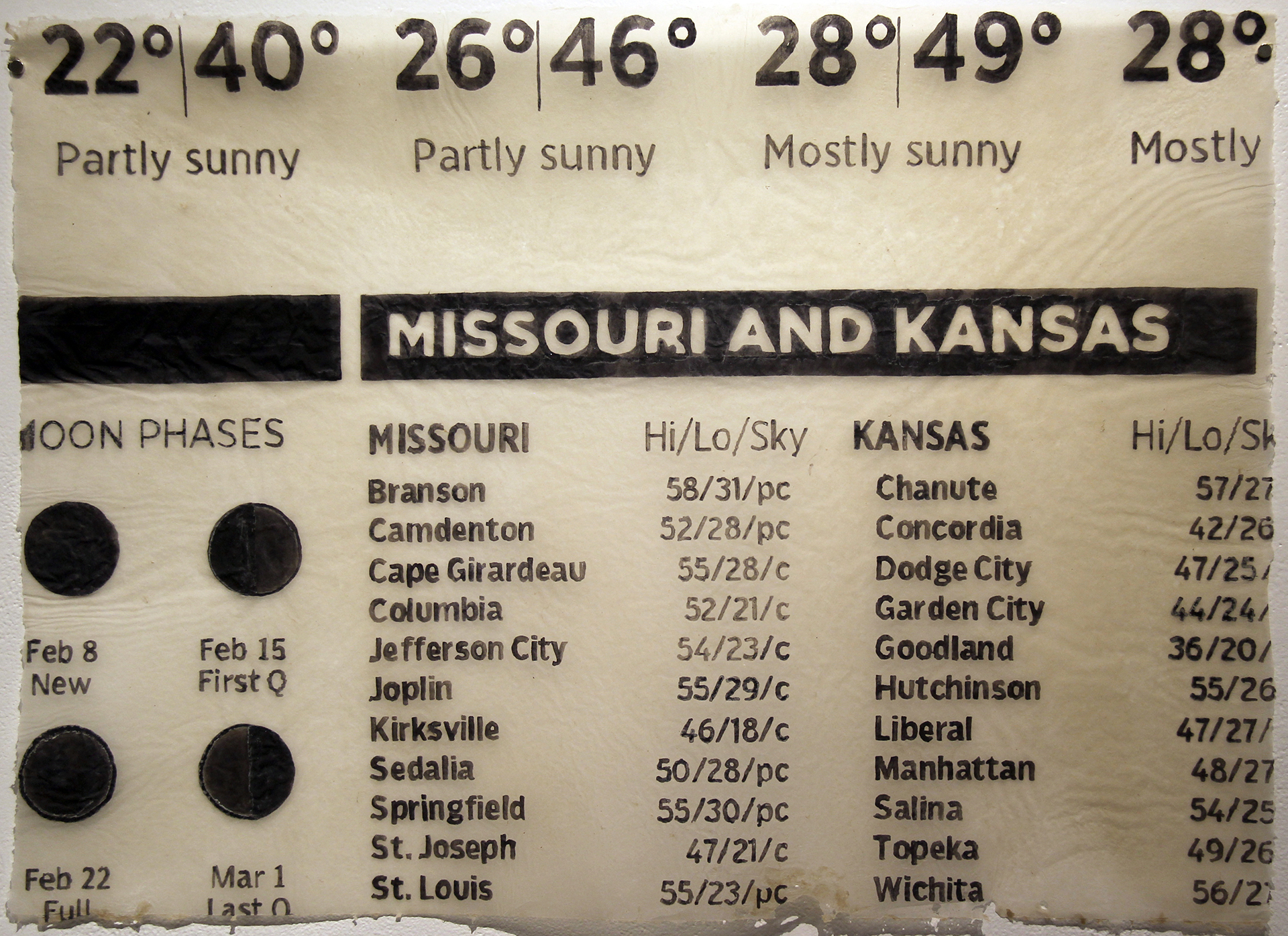
Aporia: Almanac, Kansas City
Iron gall ink on handmade flax paper, 22″ x 30″ irregular, 2016
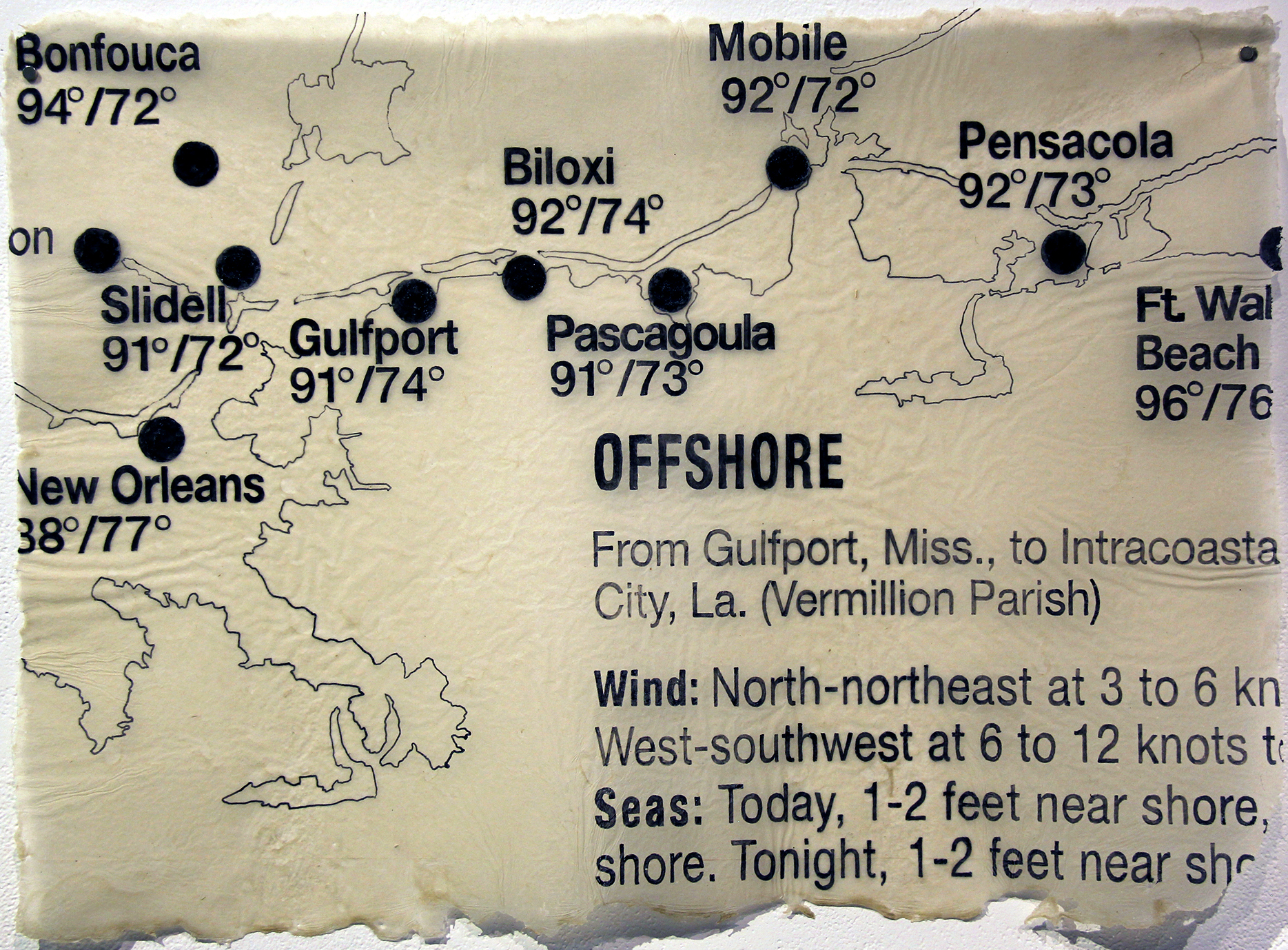
Aporia: Almanac, New Orleans
Iron gall ink on handmade flax paper, 22″ x 30″ irregular, 2016
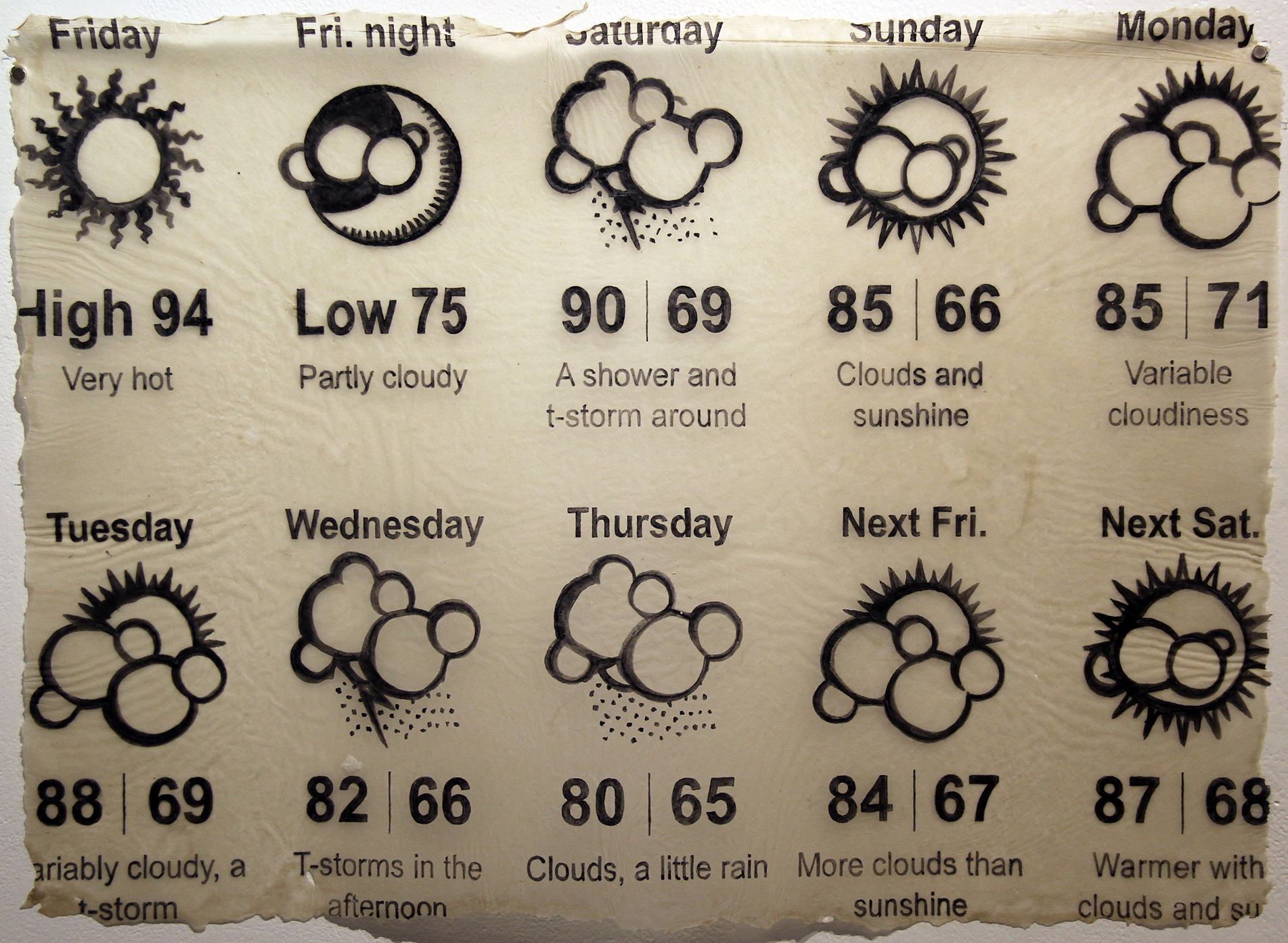
Aporia: Almanac, Philadelphia
Iron gall ink on handmade flax paper, 22″ x 30″ irregular, 2016

Aporia: Almanac, St. Louis
Iron gall ink on handmade flax paper, 22″ x 30″ irregular, 2016
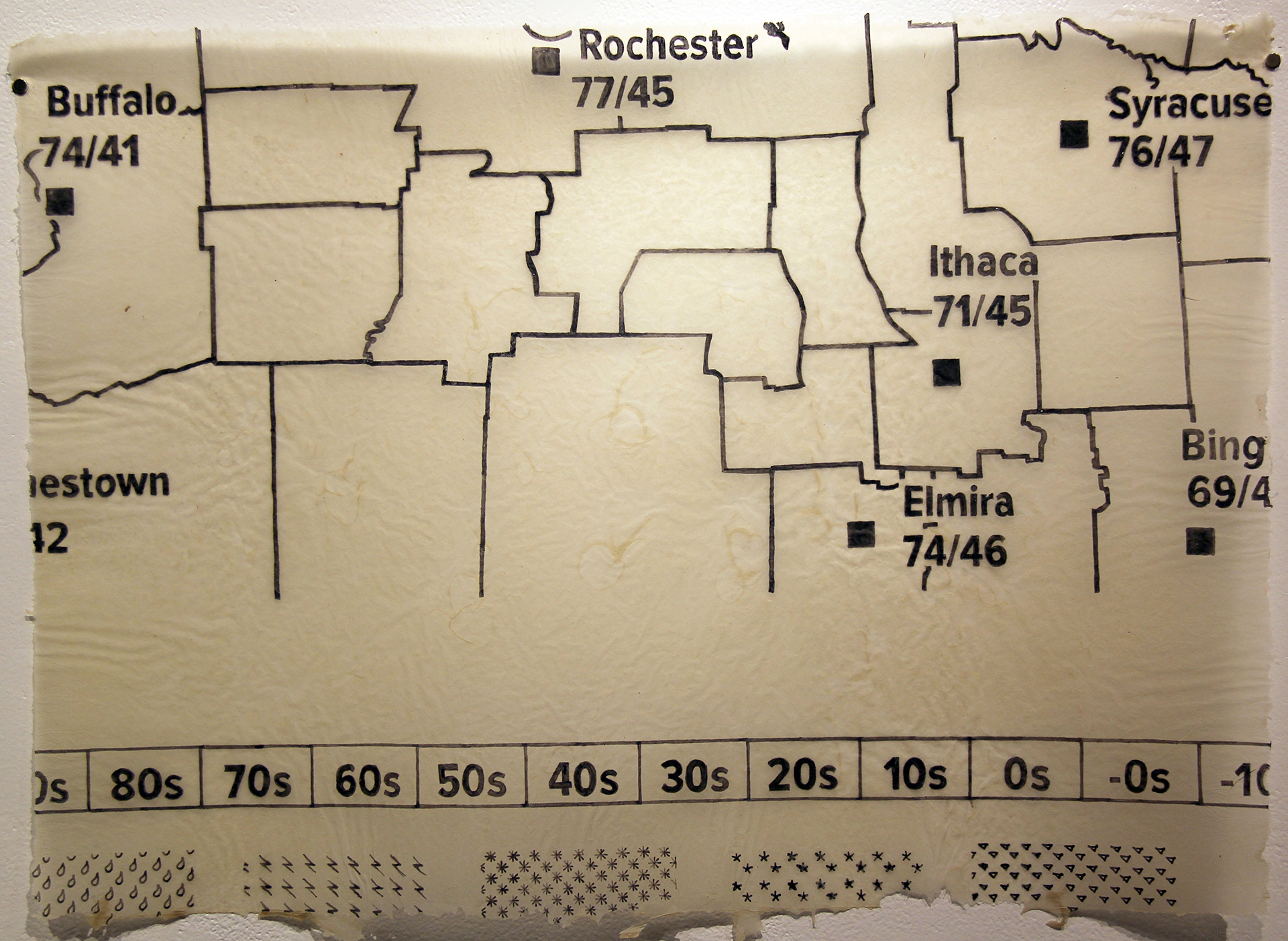
Aporia: Almanac, Syracuse
Iron gall ink on handmade flax paper, 22″ x 30″ irregular, 2016
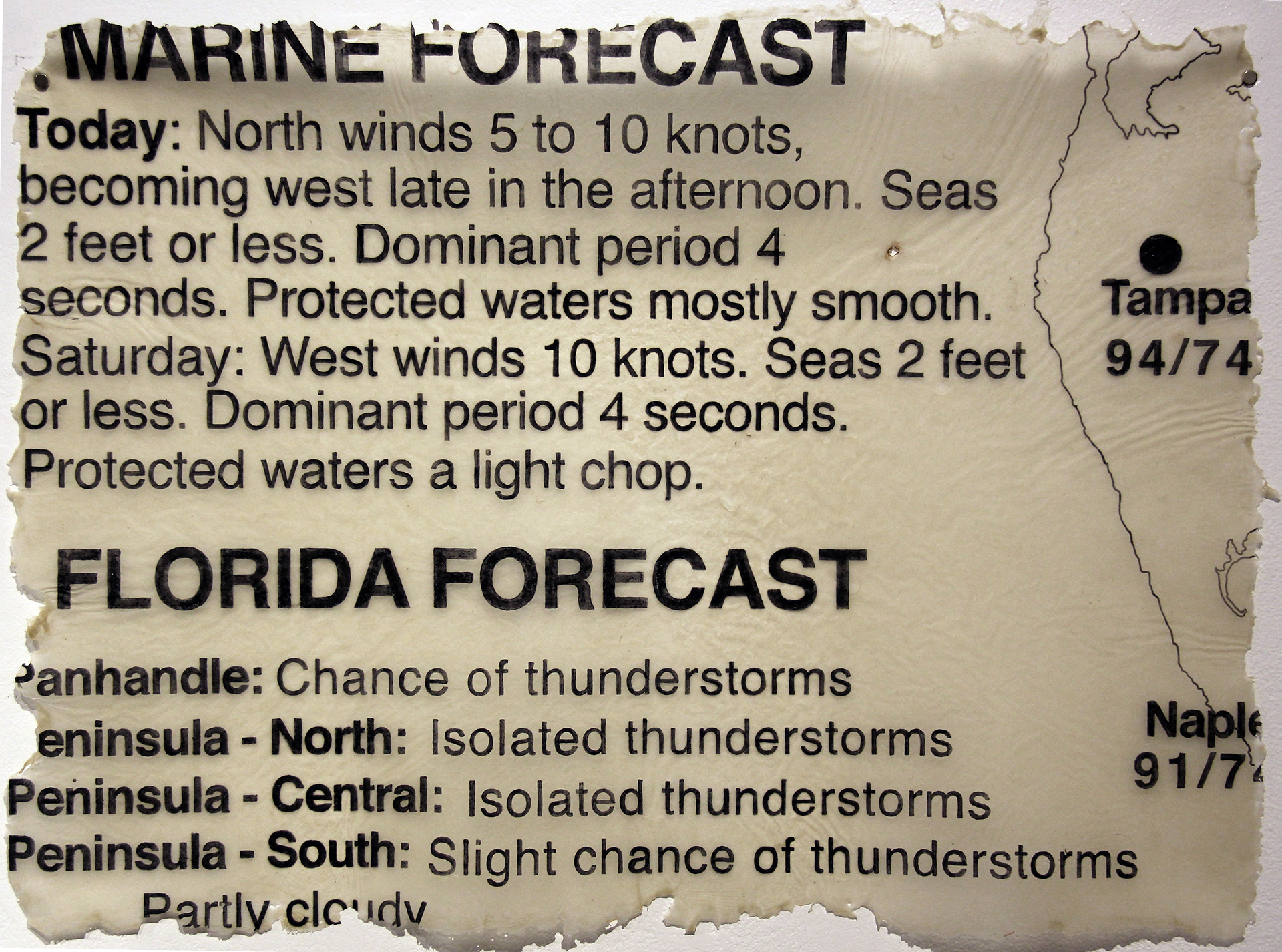
Aporia: Almanac, Tallahassee
Iron gall ink on handmade flax paper, 22″ x 30″ irregular, 2016
